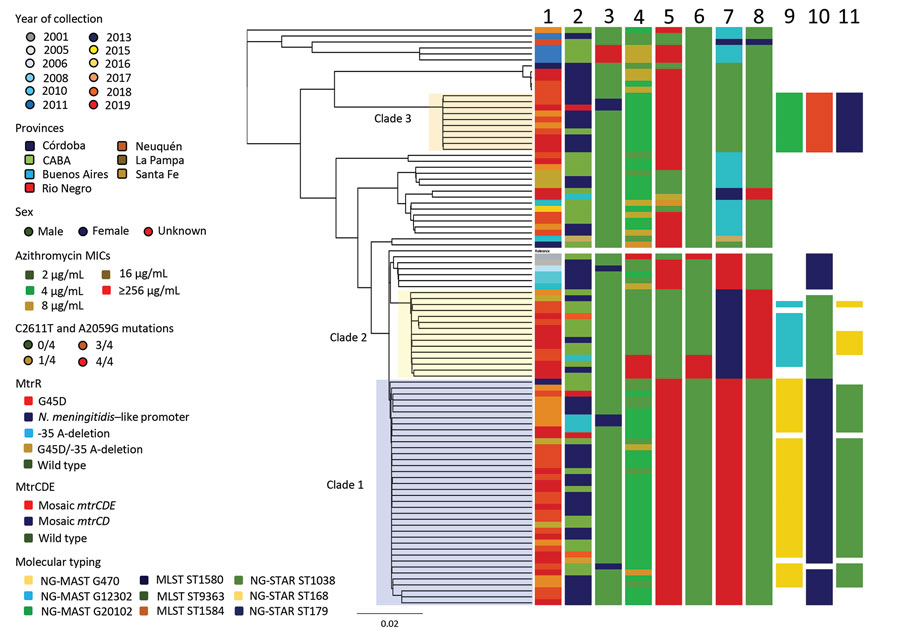Volume 27, Number 9—September 2021
Research
Genomic Epidemiology of Azithromycin-Nonsusceptible Neisseria gonorrhoeae, Argentina, 2005–2019
Figure 2

Figure 2. Phylogenomic tree of 96 Neisseria gonorrhoeae isolates with azithromycin MICs of >2 μg/mL, Argentina, January 2005–November 2019. Lane 1, year; lane 2, province; lane 3, sex; lane 4, azithromycin MICs; lane 5, 23S C2611T; lane 6, 23S A25059G; lane 7, MtrR; lane 8, MtrCDE; lane 9, NG-MAST; lane 10, MLST; lane 11, NG-STAR. Scale bar indicates substitutions per site. CABA, Ciudad Autónoma de Buenos Aires; MLST, multilocus sequence typing; NG-MAST, N. gonorrhoeae multiantigen sequence typing; NG-STAR, N. gonorrhoeae sequence typing for antimicrobial resistance; ST, sequence type.
1Members of this group are listed at the end of the article.
Page created: July 01, 2021
Page updated: August 17, 2021
Page reviewed: August 17, 2021
The conclusions, findings, and opinions expressed by authors contributing to this journal do not necessarily reflect the official position of the U.S. Department of Health and Human Services, the Public Health Service, the Centers for Disease Control and Prevention, or the authors' affiliated institutions. Use of trade names is for identification only and does not imply endorsement by any of the groups named above.